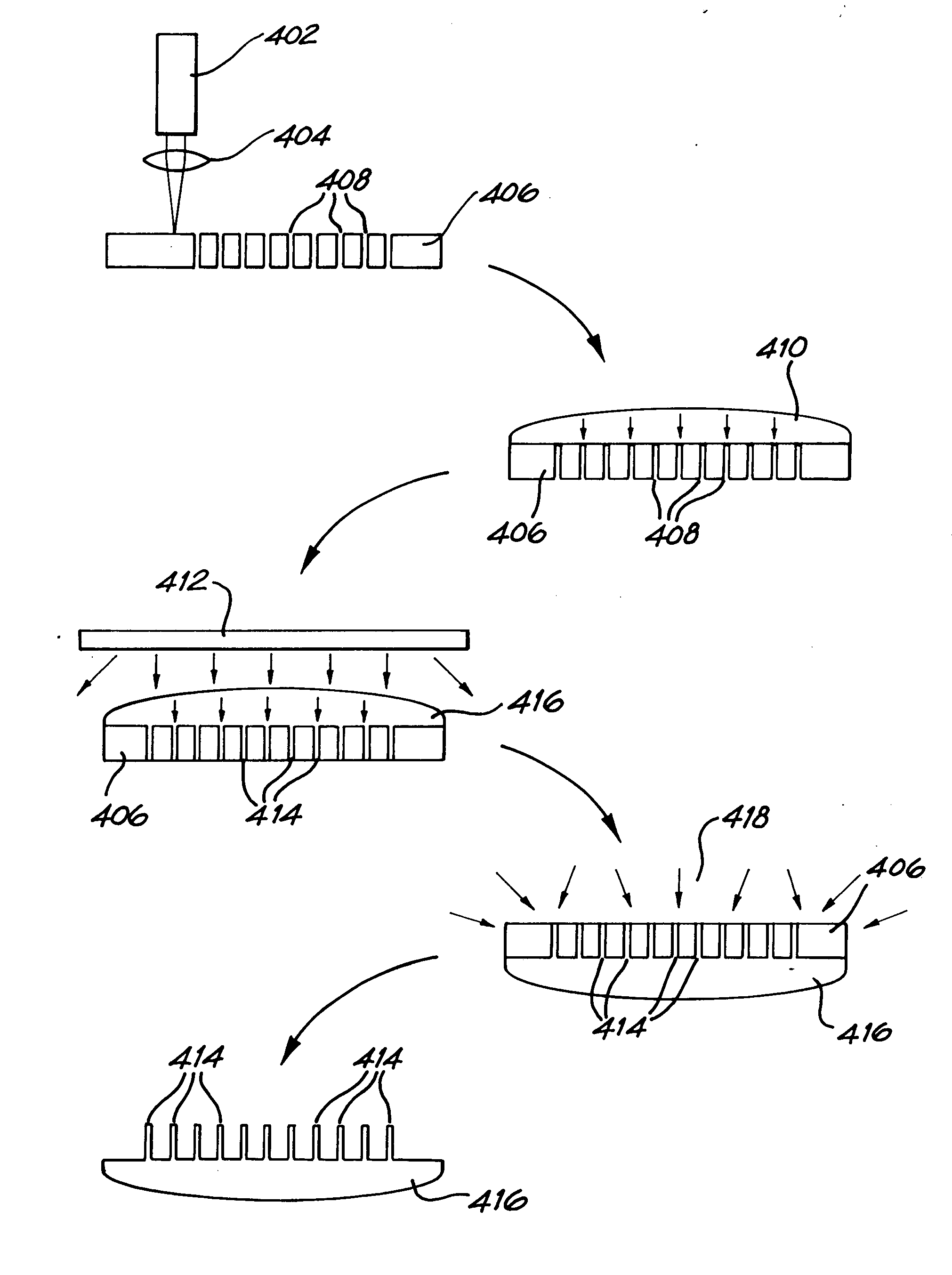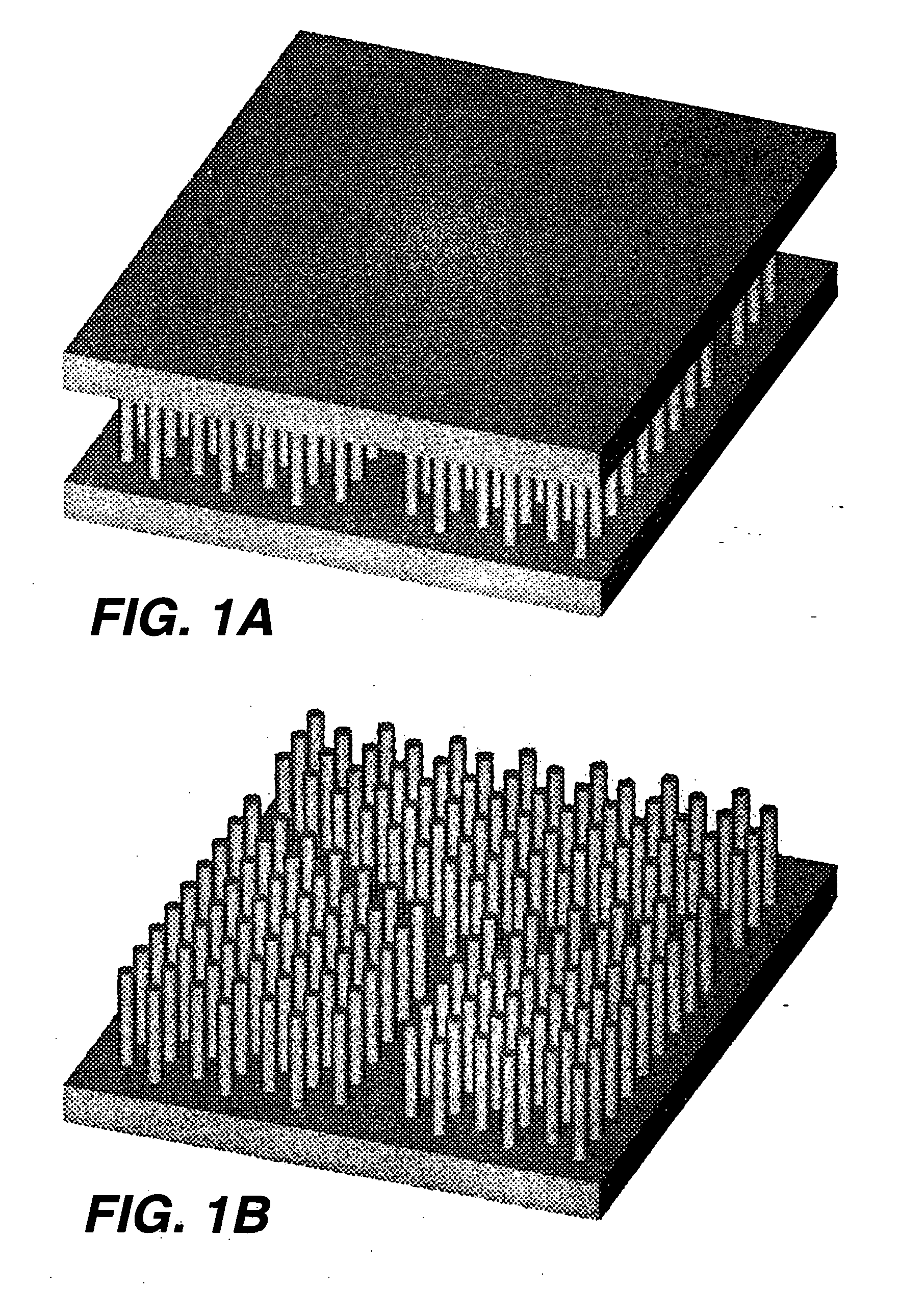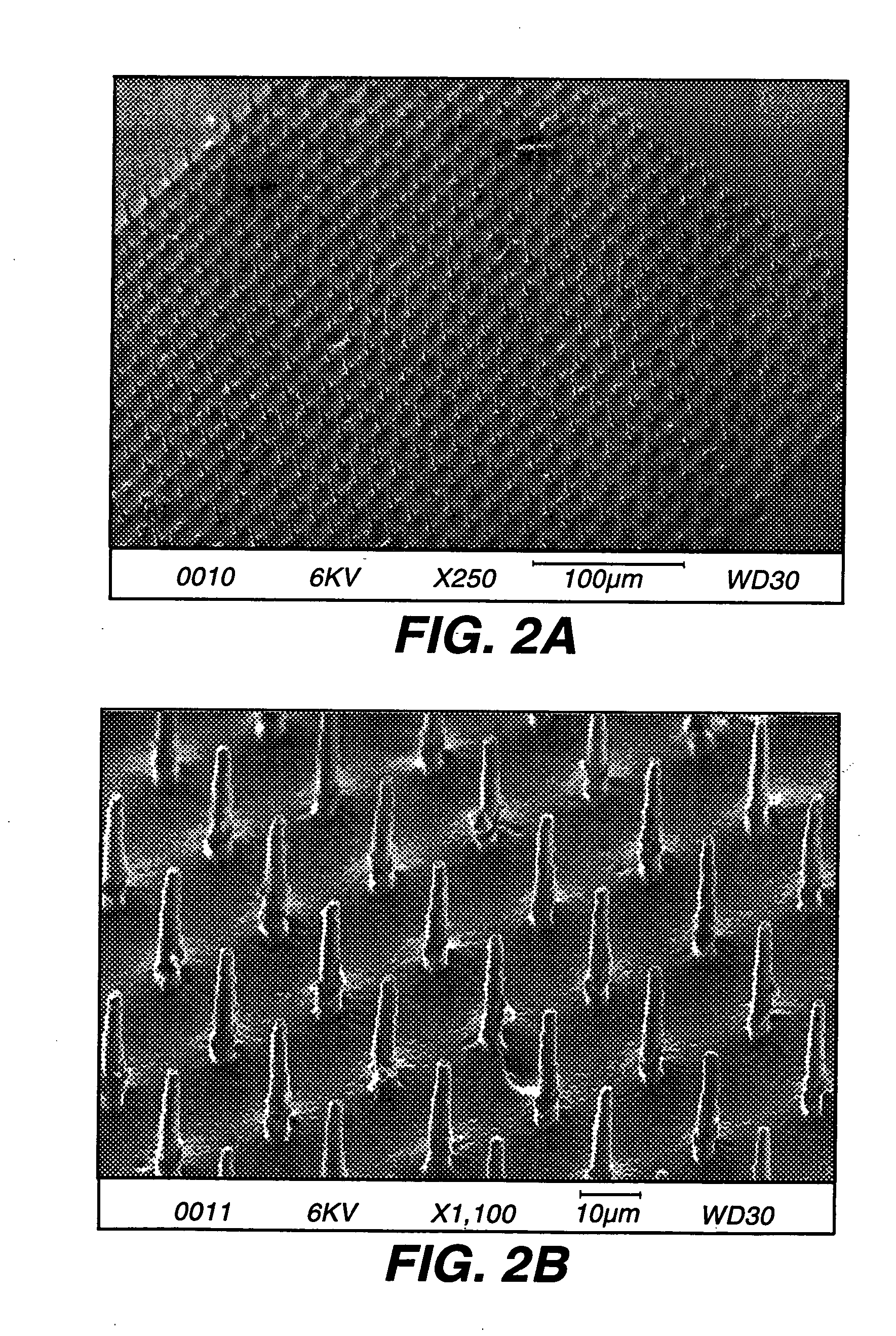Microstructures and methods of fabricating
a microstructure and fabrication method technology, applied in the field of microstructures, can solve the problems of low level of control over the placement of defects, poor suited to fabricating the complex designs required of optical circuitry, and limited to simple designs
- Summary
- Abstract
- Description
- Claims
- Application Information
AI Technical Summary
Benefits of technology
Problems solved by technology
Method used
Image
Examples
example 1
A photonic crystal was fabricated as follows. A template was formed in a polyolefin film by combining a laser based ablation process (using a UV, frequency-doubled copper-vapour laser, operating a wavelength of 255 nm) with a computer controlled stage and shutter arrangement. A triangular array which exhibits a band-gap was programmed into the computer. Using an average power of 30 mW and 100 ms exposure time, arrays of holes were formed in the polyolefin film. This constituted the template, which contained approximately 2 μm diameter holes. The template was then sandwiched between two microscope slides, which were spaced using cellulose tape, and the assembly placed on a hotplate at a temperature of 90° C. As a result the template shrunk, with the hole diameter reducing by a factor of five, while the spacing reduced by a factor of two.
The next step involved the filling of the template with a high refractive index material. Germanium was deposited onto the template. After deposit...
example 2
Method
In this experiment a frequency-doubled copper-vapour laser was used to process a range of different materials in a direct write manner. Frequency doubling was achieved using a beta-barium borate crystal, converting the 510 nm output to 255 nm. The laser was operated at a pulse rate of 10 kHz with a 40 ns pulse duration. Laser ablation using the ultra-violet, frequency-doubled output of these is well known and the characteristics of this laser made it ideal for material processing.
Various polymers including polycarbonate (PC), polyvinylchloride (PVC), polymethylmethacrylate (EMMA), polyolefin and polyethyleneterephthalateglycolate (PETG) were laser-processed. Each has significant absorption in the UV wavelength range, allowing photoablative processes to take place. Due to the copolymer matrix structure of polyolefin it exhibits a high degree of heat-shrinkability, and this property was used to further miniaturise the templates.
The templates were processed using computer ...
example 3
Novel Methods for Fabricating Photonic Crystal Like Structures
One of the most exciting materials to emerge in recent times is the photonic crystal. Various methods for fabricating photonic crystals have been reported. These include bottom-up micro-fabrication methods such as two-photon polymerisation of resins, opal templating, colloidal packing, self-assembly and stacking-micromanipulation processes, and top-down methods such as e-beam lithography, focussed ion beam etching and holography. These methods are capable of forming both two-dimensional (planar) and three-dimensional structures with varying degrees of complexity. However, the methods falling in the first group lack the degree of flexibility required to fabricate complex photonic crystal structures while those in the second have large infrastructure costs.
The recent demonstrations of sub-micron laser machining using ultrafast laser sources opens the way to top-down fabrication of photonic crystals using direct write l...
PUM
| Property | Measurement | Unit |
|---|---|---|
| refractive indices | aaaaa | aaaaa |
| diameter | aaaaa | aaaaa |
| diameter | aaaaa | aaaaa |
Abstract
Description
Claims
Application Information
 Login to View More
Login to View More - R&D
- Intellectual Property
- Life Sciences
- Materials
- Tech Scout
- Unparalleled Data Quality
- Higher Quality Content
- 60% Fewer Hallucinations
Browse by: Latest US Patents, China's latest patents, Technical Efficacy Thesaurus, Application Domain, Technology Topic, Popular Technical Reports.
© 2025 PatSnap. All rights reserved.Legal|Privacy policy|Modern Slavery Act Transparency Statement|Sitemap|About US| Contact US: help@patsnap.com



